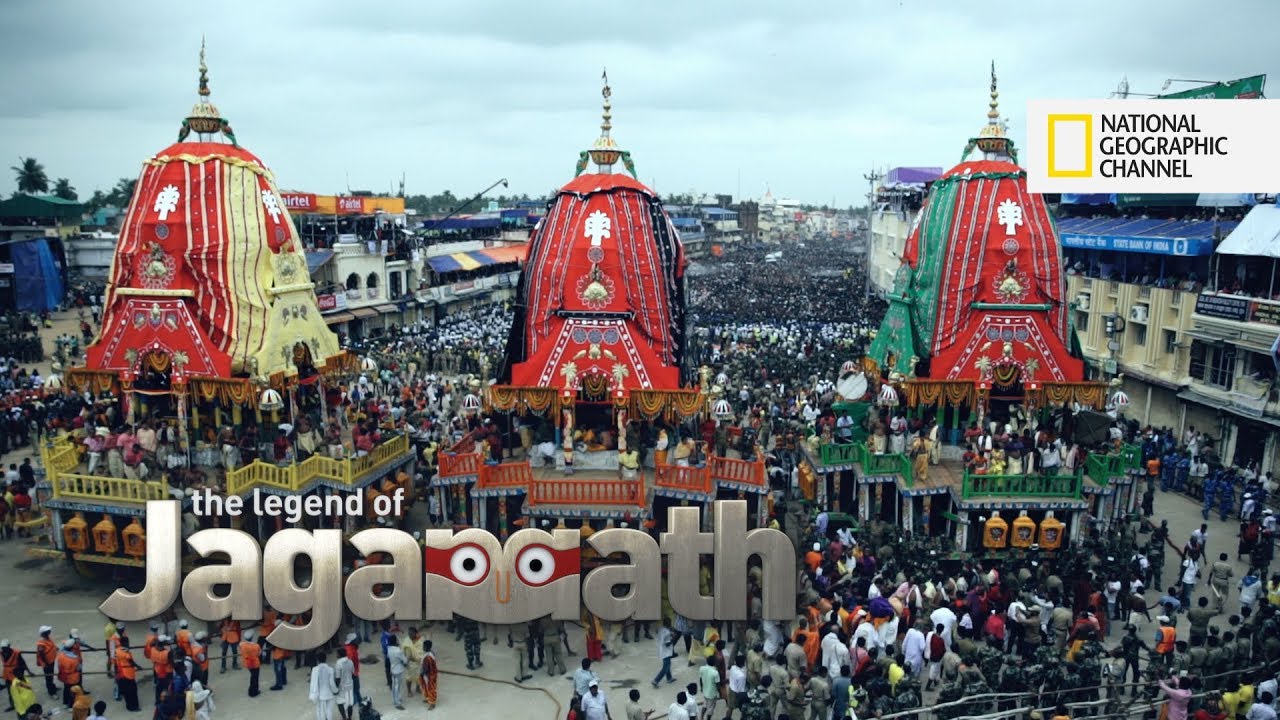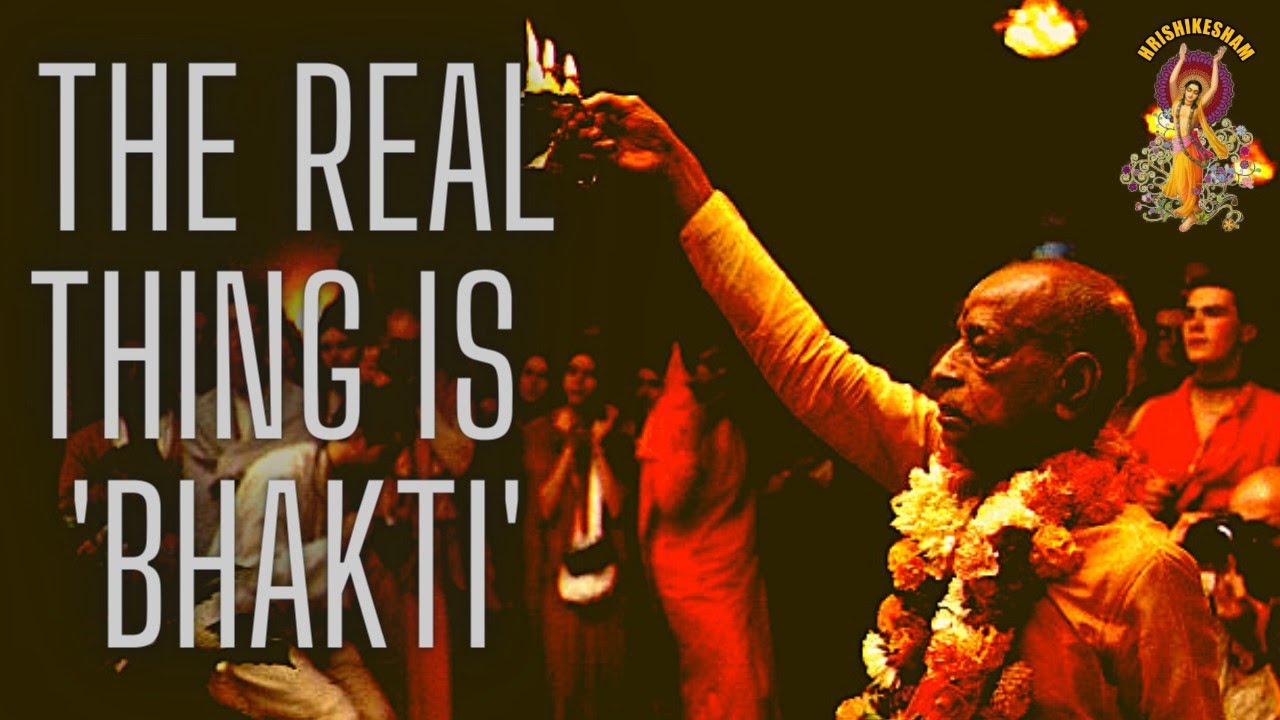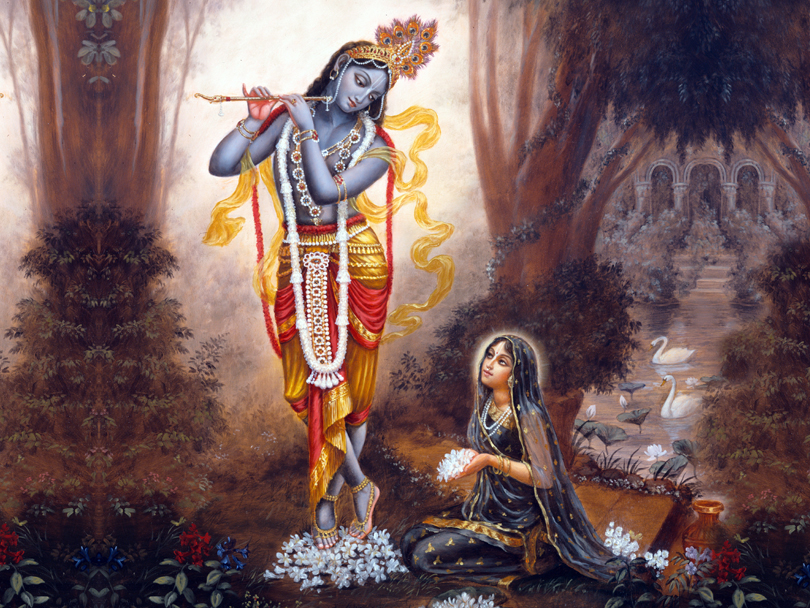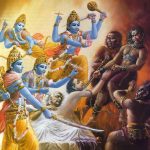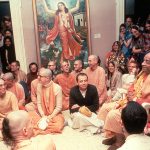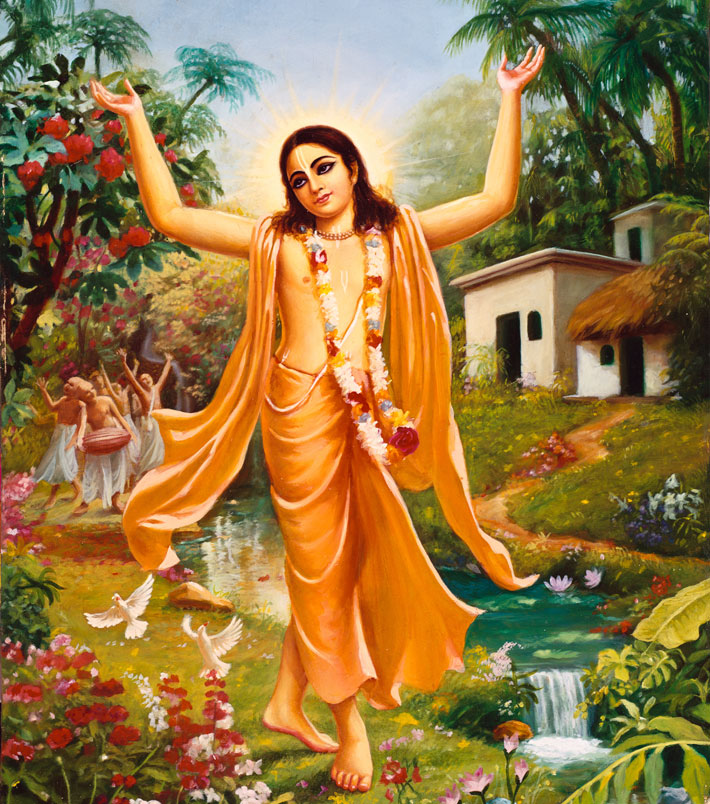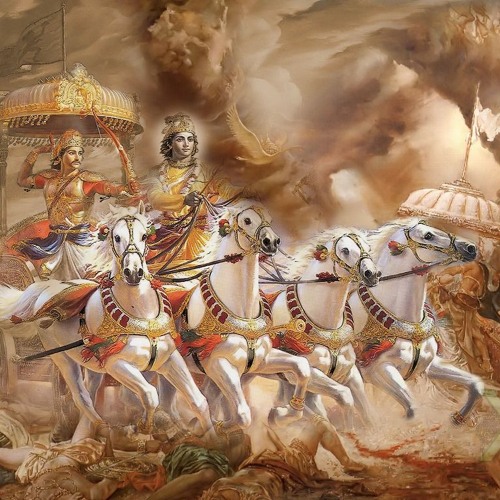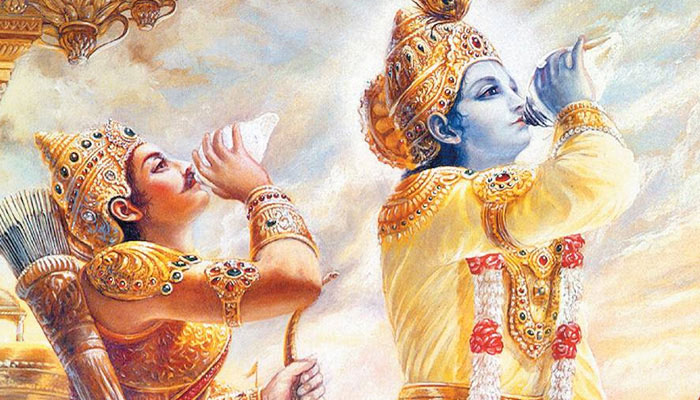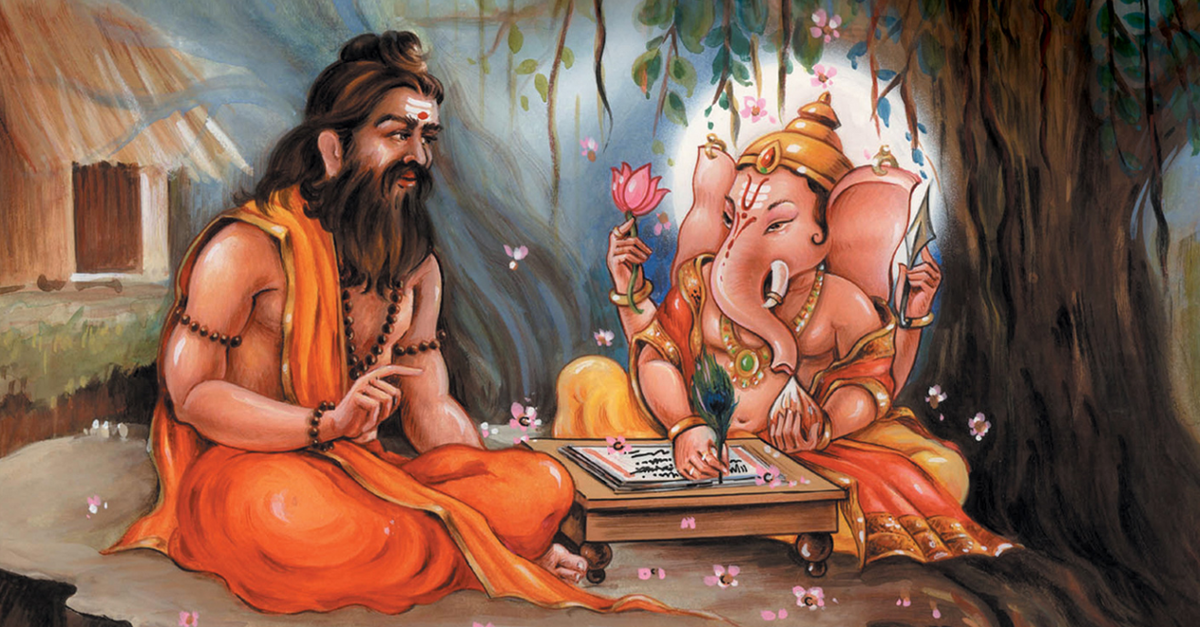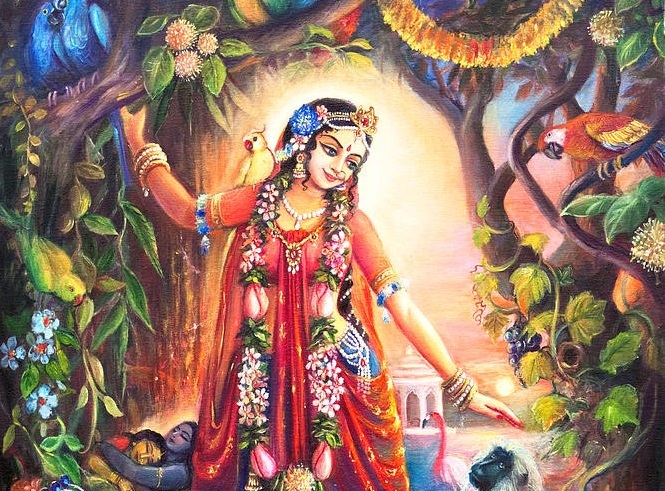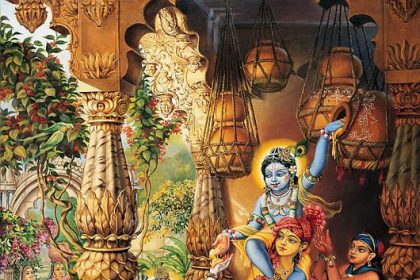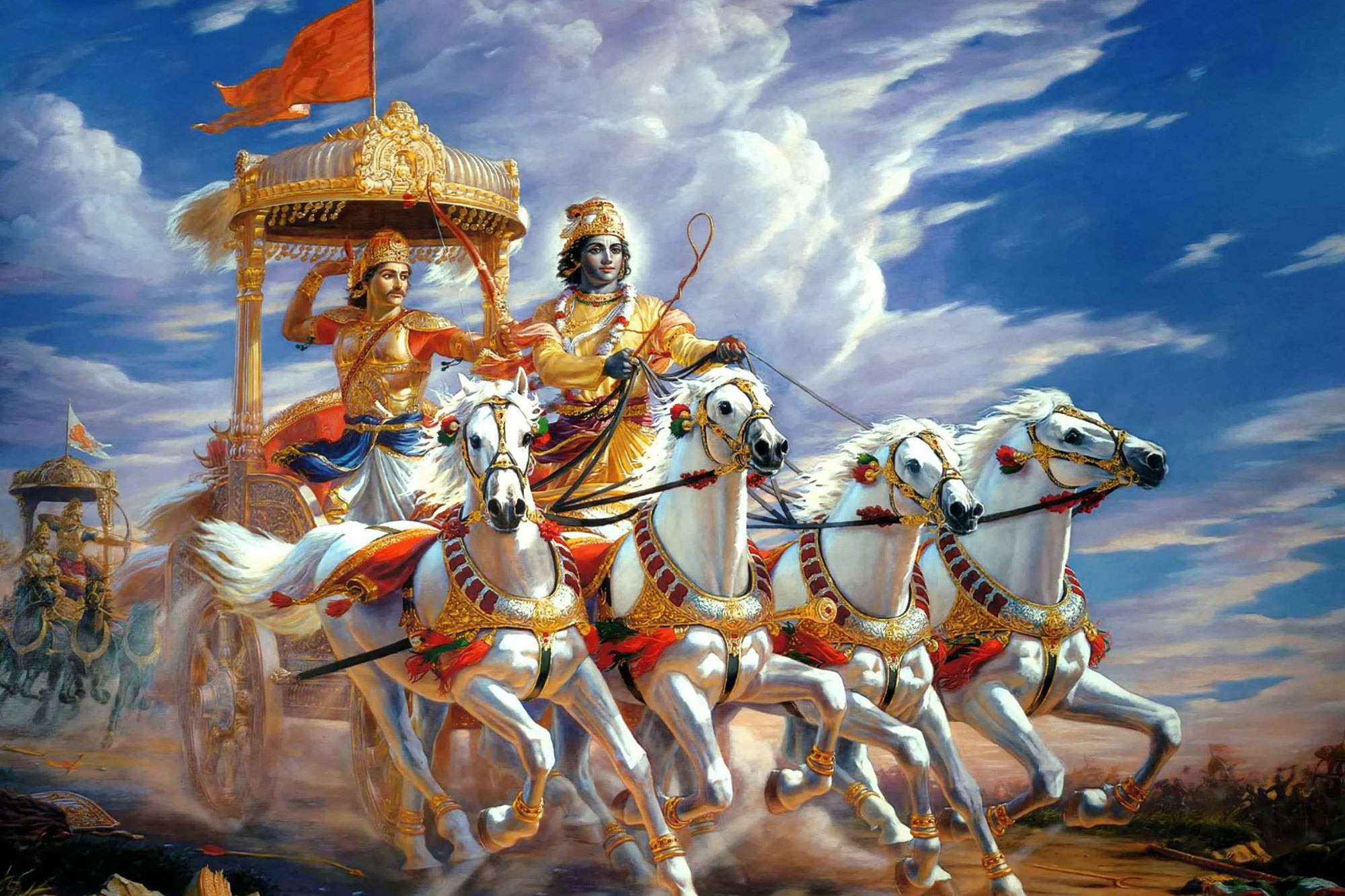dhyeyaṁ sadā paribhava-ghnam abhīṣṭa-dohaṁ
tīrthāspadaṁ śiva-viriñci-nutaṁ śaraṇyam
bhṛtyārti-haṁ praṇata-pāla bhavābdhi-potaṁ
vande mahā-puruṣa te caraṇāravindam
TRANSLATION
My dear Lord, You are the Mahā-puruṣa, the Supreme Personality of Godhead, and I worship Your lotus feet, which are the only eternal object of meditation. Those feet destroy the embarrassing conditions of material life and freely award the greatest desire of the soul, the attainment of pure love of Godhead. My dear Lord, Your lotus feet are the shelter of all holy places and of all saintly authorities in the line of devotional service and are honored by powerful demigods like Lord Śiva and Lord Brahmā. My Lord, You are so kind that You willingly protect all those who simply bow down to You with respect, and thus You mercifully relieve all the distress of Your servants. In conclusion, my Lord, Your lotus feet are actually the suitable boat for crossing over the ocean of birth and death, and therefore even Lord Brahmā and Lord Śiva seek shelter at Your lotus feet.”
PURPORT (A.C Bhaktivedanta Swami Srila Prabhupada)
The incarnation of the Personality of Godhead in Kali-yuga is described and worshiped in this verse. The sage Karabhājana, after describing the incarnation of Godhead in each of the three previous yugas-Satya, Tretā and Dvāpara—presented suitable prayers which are utilized for glorifying the Lord in each particular age. After describing the Lord’s manifestation in Kali-yuga with the verse kṛṣṇa-varṇaṁ tviṣākṛṣṇam [SB 11.5.32], this and the next verse are now presented to glorify the Lord’s appearance in Kali-yuga as Caitanya Mahāprabhu, kṛṣṇa-varṇam. Caitanya Mahāprabhu appears in Kali-yuga and teaches everyone to chant the holy name of Kṛṣṇa. The members of the ISKCON movement are so much absorbed in kṛṣṇa-varṇam, or chanting the holy names of Kṛṣṇa, that sometimes ordinary persons refer to them as “the Kṛṣṇas.” Thus whoever comes into contact with Caitanya Mahāprabhu’s movement immediately begins to worship Kṛṣṇa by chanting His holy name.
The words dhyeyaṁ sadā, or “always to be meditated upon,” indicate that there are no hard-and-fast rules in this age for chanting the holy names of Kṛṣṇa. In Kali-yuga the authorized process of meditation is to chant the holy names of the Lord, especially the mantra Hare Kṛṣṇa, Hare Kṛṣṇa, Kṛṣṇa Kṛṣṇa, Hare Hare/ Hare Rāma, Hare Rāma, Rāma Rāma, Hare Hare. This process is to be executed constantly and always (sadā). Similarly, Caitanya Mahāprabhu stated, nāmnām akāri bahudhā nija-sarva-śaktis tatrārpitā niyamitaḥ smaraṇe na kālaḥ: in Kali-yuga, the Supreme Lord has kindly invested all of His potencies in His holy name, and there are no hard-and-fast rules for chanting such names. The mention of such rules refers to kāla-deśa-niyama, or regulations of time and place. Normally there are strict regulations governing the time, season, place, conditions, etc., under which one may execute a particular Vedic ceremony or chant a particular mantra. However, one should chant the holy name of Kṛṣṇa everywhere and at all times, twenty-four hours a day. Thus there is no restriction in terms of time and place. This is the meaning of Caitanya Mahāprabhu’s statement.
The word paribhava-ghnam is significant in this verse. In Kali-yuga human society is infected with enviousness. There is great envy, even among members of the same family, who constantly quarrel in this age. Similarly, neighbors are envious of each other and of each other’s possessions and status. And entire nations, burning with envy, go to war unnecessarily at the risk of genocide caused by terrible modern weapons. But all of these harassments caused by family members, strangers, so-called friends who are unfaithful, opposing nations, financial competition, social disgrace, cancer, etc., can be relieved by taking shelter of the lotus feet of Caitanya Mahāprabhu. It is not possible to save the material body, but one who takes shelter of Caitanya Mahāprabhu loosens the hard knot of the heart that psychologically binds him to the hallucination of identifying with the external body or the subtle material mind. Once this false identification is broken, one can be blissful in any adverse material condition. Those who foolishly try to make the temporary body eternal are wasting their time and neglecting the actual process for making life permanent, which is to take shelter of the lotus feet of Caitanya Mahāprabhu, who is Kṛṣṇa Himself.
In this verse the word tīrthāspadam means that the lotus feet of Caitanya Mahāprabhu are the shelter of all holy places. As the Kṛṣṇa consciousness movement spreads all over the world, we often find, especially in poor third-world countries, that it is very difficult for people to travel to India to visit the most exalted holy places such as Vṛndāvana and Māyāpur. Especially in South America it is very difficult for a large number of devotees to visit such places in India and purify themselves. But Caitanya Mahāprabhu is so merciful that simply by worshiping Him, Vaiṣṇavas throughout the world receive the benefit of having visited the supreme holy place, namely the lotus feet of Caitanya Mahāprabhu. Thus there is no loss for the followers of the Kṛṣṇa consciousness movement, despite their external situation.
In this regard, Śrīla Viśvanātha Cakravartī Ṭhākura has stated, kalau dravya-deśa-kriyādi-janitaṁ durvāram apāvitryam api nāśaṅkanīyam iti bhāvaḥ. In this age the world is so polluted by sinful life that it is very difficult to become free from all of the symptoms of Kali-yuga. Still, one who is faithfully serving in the missionary work of Caitanya Mahāprabhu need not fear occasional, unavoidable symptoms of Kali-yuga. The followers of Caitanya Mahāprabhu strictly follow the four regulative principles of no illicit sex, no intoxication, no meat-eating and no gambling. They try to always chant Hare Kṛṣṇa and engage in the service of the Lord. However, it may happen that by accident an occasional symptom of Kali-yuga such as envy, anger, lust, greed, etc., may momentarily appear in the life of a devotee. But if such a devotee is actually surrendered at the lotus feet of Caitanya Mahāprabhu, by His mercy such an unwanted symptom, or anartha, will quickly disappear. Therefore, a sincere follower of the Lord should never be discouraged in the execution of his prescribed duty but should be confident that he will be protected by Caitanya Mahāprabhu.
It is also mentioned in this verse, śiva-viriñci-nutam. Lord Śiva and Lord Brahmā are undoubtedly the two most powerful personalities within this universe. Still, they meticulously worship the lotus feet of Caitanya Mahāprabhu. Why? Śaraṇyam. Even Lord Śiva and Lord Brahmā are not safe without the shelter of the lotus feet of the Lord.
The words bhṛtyārti-haṁ praṇata-pāla indicate that if one simply bows down without duplicity at the lotus feet of the Lord (praṇata), then the Lord will give such a sincere candidate all protection. This verse does not mention that one need be an exalted devotee of the Lord. Rather, it is stated that if one simply bows down at the Lord’s lotus feet he will get all protection, and this also applies to anyone who is trying to serve the mission of Caitanya Mahāprabhu. Even the neophyte will get all protection by the mercy of the Lord.
In regard to the words bhavābdhi-potam, or “a suitable boat for crossing the ocean of material existence,” there is the following statement by Lord Brahmā and other demigods in the Śrīmad-Bhāgavatam: tvat-pāda-potena mahat-kṛtena kurvanti go-vatsa-padaṁ bhavābdhim. “By accepting Your lotus feet as the boat by which to cross the ocean of nescience, one follows in the footsteps of the mahājanas and can cross that ocean as easily as one steps over the hoofprint of a calf.” According to Śrīla Rūpa Gosvāmī, a follower of Caitanya Mahāprabhu is jīvan-mukta, or a liberated soul. Thus the devotee is not worried about his future destination, for he is confident that the Lord will quickly take him across the ocean of material existence. Such confidence is referred to in the Upadeśāmṛta by the word niścayāt, meaning firm conviction about the potency of the process of devotional service. According to Śrīla Viśvanātha Cakravartī Ṭhākura, the statement śiva-viriñci-nutam is also understood to indicate that Caitanya Mahāprabhu is worshiped by Lord Śiva’s incarnation Advaita Ācārya and by Lord Brahmā’s incarnation Haridāsa Ṭhākura.
Caitanya Mahāprabhu is addressed in this verse as mahā-puruṣa, meaning puruṣottama, the Supreme Personality of Godhead. Similarly, there is reference to mahāprabhu in the Śvetāśvatara Upaniṣad (3.12), mahān prabhur vai puruṣaḥ sattvasyaiṣa pravartakaḥ: “The supreme prabhu is the Personality of Godhead, who is the initiator of the entire cosmos.” Similarly, Lord Śrī Gaurakṛṣṇa is addressed by the word mahāpuruṣa in this verse, and the whole intention of this verse is to offer obeisances at His lotus feet. Such lotus feet are the actual eternal object of meditation because they cut off the bondage of material life and fulfill the desires of the devotees. Although the conditioned souls laboring arduously under illusion pursue many temporary goals in life, there is no possibility of their achieving actual bliss or knowledge. Such eternal bliss and knowledge is actually wealth. One should not neglect the lotus feet of Caitanya Mahāprabhu, taking Him to be an ordinary person, and instead accept the temporary, useless shelter offered by the illusory energy of the Lord.
Those yogīs who falsely select some other object of meditation besides the lotus feet of the Lord are simply creating obstructions to their own eternal life. When the meditator, the meditation and the object of meditation are all on the eternal platform of the Lord, then actual shelter has been achieved. Generally the conditioned souls are engaged in bhoga-tyāga. Sometimes they run madly after material prestige and sense gratification, and sometimes they desperately try to renounce these things. However, beyond this vicious cycle of alternating sense gratification and renunciation are the lotus feet of the Lord, which constitute the ultimate abode of peace and happiness for the living entity.
The following are additional notes on this verse given by Śrīla Bhaktisiddhānta Sarasvatī Ṭhākura.
dhyeyam—the object indicated by the word dhīmahi in the Gāyatrī mantra.
tīrthāspadam—the original shelter of holy places headed by Śrī Gauḍakṣetra and Vraja-maṇḍala; or the original shelter, namely the lotus feet of the Lord, of the great devotees of the Brahma-sampradāya following in the succession of faithful hearing. The succession of faithful hearing begins with Śrīmad Ānandatīrtha (Madhvācārya) and is continued by the rūpānuga mahā-bhāgavatas, the highly elevated followers of Rūpa Gosvāmī and Caitanya Mahāprabhu.
śiva-viriñci-nutam—He who is worshiped by the incarnation of Lord Śiva, Śrīmad Advaitācārya Prabhu, and by the incarnation of Lord Viriñci, Śrīmān Ācārya Haridāsa Prabhu.
bhṛtyārti-ham—He who destroyed by His causeless mercy the misery of His own servant, the brāhmaṇa Vāsudeva, who was afflicted with leprosy in caitanya-līlā.
bhavābdhi-potam—the means of crossing over the ocean of saṁsāra; or the shelter of those who are freeing themselves from material existence, which afflicts the living entity in the form of hankering for liberation or material enjoyment. Such persons who took advantage of this transcendental boat of the Lord’s lotus feet are Sārvabhauma Bhaṭṭācārya, who was saved from mukti-kāma, or desire for liberation, and Pratāparudra Mahārāja, who was saved from bhukti-kāma, or the desire for material opulence.
Source: Srimad Bhagavatam 11.5.33




